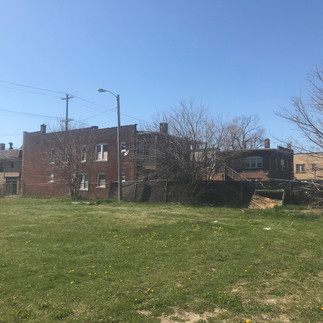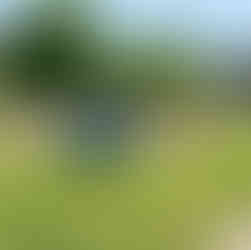- Rosa Chang
- Apr 15, 2025
- 6 min read
Happy April!
Spring has officially arrived! 2024 started off a bit slower for our On the Map Blog Series, as much of Indigo Shade Map’s energy was devoted to developing our newly updated online map in collaboration with the special exhibition Blue Gold: The Art and Science of Indigo at the Mingei International Museum. The exhibition wrapped up beautifully on March 16, and we hope you had a chance to explore its rich perspectives on indigo. Thank you for your patience with Indigo Shade Map’s irregular schedule and sometimes slow pace — this one-person digital platform is a labor of love, and I truly appreciate your continued support.
Now, Indigo Shade Map is back on track, returning to our regular rhythm of sharing stories and practices around indigo and sustainable art from practitioners, artists, and hobbyists around the world.
In honor of Earth Month, we’re excited to begin our 2025 series with a beautiful story from Julia Tabakhova, based in Calvados, Normandy, France.
Location & Environment
I live in Normandy, Calvados, the land of the apple trees. It’s a 40 minutes ride from the sea, La Manche. I am located in the outskirts of the city of Caen, in the countryside. My tiny house is nestled on a hill surrounded by forests and bocages.
A small wood of oak and chestnuts borders the side of my garden, a woodland fading into a meadow medium sized parcel, a one person task, that I let grow and help rewild. Punctually, I would transplant local and historical rustic plant species to recreate a traditional habitat for insects and critters, to assist and encourage biodiversity. Rewilding the terrain has become one of my goals. I haven’t cut my grass in 5 years now and it’s a glorious wasteland, a sanctuary for wildlife.
I also planted tinctorial, medicinal and fruit trees to have diversity and autonomy in my homestead. I truly started my dye garden one year after I moved in, to gently observe the passage of time, the shadowy areas and sunny spots through the seasons and map out the different micro zones, to get acquainted with more fresh pockets, or dried up patches. I decided to design a dedicated space, value small-scale, local solutions that meet the needs of a particular place and down sized to a one person capacity. My nugget-garden is paved with opus limestone and hosts hugelkultur raised beds inspired from biomorphic shapes enclosed by terracotta tiles. 6 oval shapes in total in the middle of each nitrogen rich plants will bring a slow nitrogen release and provide partial shade. With permaculture* in mind I started to weave and take into account wind direction, the dance of the sun and its shadows throughout the seasons, the humidity brought by the wood and the very specific type of soil generated by the rich blanket of leaves. This natural cover creates a mulch that I use as a compost and a soil enrichment. And that’s how I am gradually becoming a bio regionalist, perpetually learning from the land, a herbal folklorist, writer, dyer and land steward.

2. Indigo Plants & Practice
I start my seedlings in mid march under my greenhouse with 4 varieties of Japanese Indigo (Persicaria Tinctoria): Senbon**, Maruba***, Chijimiba**** and Kojyoko****. After one year I was able to collect seeds and let them cross-pollinate each other. So far Maruba is the variety that is best suited for my climate, it blossoms and matures before the first frost here, right behind is Kojyoko and Chijimiba, Senbon albeit the last one, is, with Maruba, the variety that gives the highest indigo yield for my area. I let them hybridise with each other.
My end goal is to have Persicaria acclimated to my region. I also grow Woad (Isatis Tinctoria) that I sourced from a historical seed bank organisation here in Normandy. It's an historical one that has been registered and preserved, imported from China as far as the 10th century. It goes by many other names here: “Wouède”, “Guède” and “Pastel des Teinturières”. Even the second year woad yields quite a good amount of indigo. Among my raised beds I opted for a rotation crop between different dye plants and - indigo bearing plants - notorious for sucking up a lot of soil nutrients, the latter always leaving behind a poorer soil - typically suited for Cosmos. Following Permaculture principles I don’t grow plants, I grow soil, therefore - all year long - I create and enrich my different keyholes, strategically placed to sustain a carbon rich source and all the biomass and minerals necessary for a healthy substrate. The round shapes of my nugget-shaped beds marry aesthetics with function, when watering - the arc of the watering can mimic the rounded shape and the terracotta tiles remain fresh to the touch allowing self regulation. At the end of the season I leave the roots of my plants in place and as it decays, it is supporting wildlife and acts as a cover-crop to avoid erosion. All in all it increases efficiency and invites a circular practice. I sing, dance and play with my plants, especially in the nursery of the greenhouse.
I love to use C tones instruments (Kalimba, Marimba, bronze bell, humming) that’s the same note (DO) as a beehive and are known to have a regenerative frequency at the cellular level. Touching and saying hello and good night to them is part of my daily routine. Saying thank you after harvesting and showing them their indigo pigment too !! I see my plants as sentient beings, friends and allies and I thrive in fostering this interspecies communication and friendship. My goal this year is to build a madder* bran vat with my 4 year old madder*, reviving the local tradition of an historical vat of this region. This would be a perfect example of circularity as well since the alkali water goes back to the madder* roots once the vat is exhausted. Incorporating these practices in a symbiotic way is a quest. I grow and process my own flax and nettle as well from seed to weave, dyed in indigo too. Nothing goes to waste during this process, nettle leaves are used as nitrogen-rich manure for my indigo bearing plants. I grow them directly among my nugget-garden, their roots aerate the soil and diffuse nitrogen and minerals and can be pulled up so easily.
Nettle - the perfect companion plant, acts as a nursery for the larvae of the lady bugs and caterpillar of Red Admirable butterfly who feast on aphids. My medicinal and edible plants are also grown among my dye garden, I don’t segregate, rather integrate in the tradition of the “Jardin des simples” made of plessie d’osier (wicker weave), an enclosed elevated garden traditional from my region.
3. Culture & story of the region
Normandy is also the land of the flax. This is the biggest flax producer in Europe, and its registration aims at implementing a Woad sector as well. Historically speaking, woad was already a major crop in the middle age in Normandy, and was extensively grown and cultivated, you can still see half-timbered houses with indigo painted beams. So much so that Guillaume Le Conquérand has his story told in a 230 feet long tapestry made of stylised figures of soldiers and horses embroidered in yarn dyed with woad, madder and weld, finally achieved in 1066, almost 1000 years ago ! You can see this famous tapestry exhibited in the city of Bayeux, located in Normandy.
The association Patauge Nature from the town of Montviette has dedicated its time collecting historical seeds, and I was able to acquire this specific woad variety from them. They opened a conservatory garden in the town of Saint-Pierre-sur-Dives that traces the history of this plant. For a few years now, there has been agricultural development in this part of Normandy to implement once again large scale woad culture for the textile industry. Last time woad was grown so intensively was in the Middle Ages but it collapsed between the 16th and 17th century with the arrival of tropical indigo, as we know this story so well by now.
So we are seeing a resurgence with woad and flax development in Normandy. The flax industry is being revived with the full chain of production up to the textile with flax denim being prototyped in Normandy. A few farmers are also dedicated to grow woad on several hectares with the extraction of indigo pigment and seed oil with the second year plants.
More creators, artists, textile designers, growers and dyers are committed to explore and implement their practice around indigo and flax wether on an artisan or an industrial scale. This community grows year after year in a beautiful network that you can greet and meet during the JEMA (Journées Internationales du Patrimoine) and the FENO (Festival de l’excellence Normande).
Footnotes:
* La ferme du Bec-Hellouin is a farm school on permaculture that pioneered in my region, famous for their mandala shaped garden
** seeds from George from Bailiwick Blue, Guernsey
***seeds from Britt from Seaspell Fiber, Oregon
**** seeds from Lise from Liznogoood, Lyon
garden Timelapse:
NÄTTLA indigo confections:
NÄTTLA and nettles workings:
INSIDE INDIGO book presentation :
Connect
Julia Tabakhova is a Normandy based artisan with a love for illustrations. She graduated in art and cultural mediation and worked as an art educator for numerous museums and institutions. Along the way she crafted didactical booklets to combine knowledge with playfulness. Over the past decade she has delved into the indigo world and parallel to her dyers’s practice she has been journaling her experiments into drawings now available in her new book INSIDE INDIGO, a handbook for dyers..
Follow on Instagram: @naettla
Website : https://naettla.com




































































